- You are here:
- Home »
- Blog »
- Baseball »
- The Mike Schmidt Study
The Mike Schmidt Study
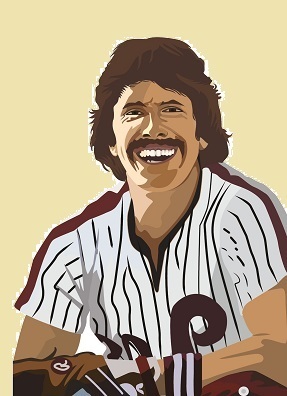
Before I started summarizing baseball books, I had never heard of the Mike Schmidt Study.
I knew of all the big ones, Ted Williams, Rod Carew, Mental Game of Baseball, etc. I even had one of Mike Schmidt’s other books Clearing The Bases, which was more of a biography.
But I saw this in the “You May Also Like…” section of Amazon.com so I grabbed it.
Something that surprised me:
This book is amazing!
I don’t understand how this book is not an industry staple. I mean, they don’t even print any more!
You can’t buy a new one, you’ve got to find it used.
Someone should have done a better job marketing this book.
Mike, if you read this give me a call, the people need this book!
So much goodness in here. I think what I appreciated most is that Mike doesn’t say “THIS, is how you stride” or “THIS is how you hold your grip”.
He understands that hitting is individual.
To me, hitting is kinda like art. Picasso wouldn’t tell Van Goh, “No, no, you’ve got to put both eyes on one side of the nose.”
There is more than one way to skin a cat here.
And there’s something really off putting when a guy comes off like he has figured it out, like he has *The Way*.
I thought it was very cool of Mike that he recognized there are several different ways to hit and breaks down the pros and cons of each.
It’s really thorough, going deep into each mechanical component of the swing, while also giving practical, philosophical advice to hitting.
There are some big, technical words in this book but it doesn’t beat you over the head with all of the scientific and physics language.
We’ll start with my biggest takeaway:
– The Percentage Pitch
In the book The Way Of Baseball [see notes HERE], Shawn Green stated the he knew about 50% of the pitches that were coming.
Fifty percent! To me, that was such an impressive number.
Mike Schmidt estimates that he knew about 75% of the pitches that he saw.
I read that and thought, “That’s interesting, I didn’t know Mike Schmidt was a liar.”
But here’s where it gets good.
Shawn Green gained his info from being a master reader of pitcher tells, but Mike knew what was coming because of a thing he calls the “Percentage Pitch”.
With the tremendous velocity and curves that a big league pitcher can throw, do you think for one minute that a batter can consider each pitch in his aresenal and hit them all effectively? Not on your life. The professional hitter thinks in terms of the percentage pitch in a given situation.
The percentage pitch can be defined as one which can be predicted through previous observation and acknowledged pitchers’ tendencies. It is the pitch which will come up a majority of times in a given situation, that is, six, seven, eight times out of ten. This is not that the hitter can’t take a good rip at something else. He may, but timing his mechanics to the most likely choice, he is putting himself in an optimum frame of mind to hit the percentage pitch with authority.
Mike goes on to say there are three types of counts: Fastball, Neutral and Breaking Ball.
1-0, 2-0, 2-1, 3-0 and 3-1 are the fast ball counts. That’s 42 percent of the possible ball/strike counts.
If the pitcher does not show you control of his breaking pitches, 0-0 and 3-2 counts become fastball counts. That’s 62 percent of the possible ball/strike counts in which the fastball becomes the percentage pitch.
The neutral counts are 1-1, and 2-2. These are the counts when you could get any pitch. Don’t try to pull the ball in these counts. And if the pitcher has control of his breaking pitches, 0-0 and 3-2 become neutral counts.
Here are the breaking ball counts: 0-2, 1-2 and 3-2 with a man in scoring position and first base open. In these counts the breaking ball becomes the percentage pitch, so you might as well guard against it.
Schmidt says adjusting to the fast ball can be accomplished by employing the inside-out stroke.
Naturally, there are more than these guidelines. When you bring in personalities, pennant races, coaching philosophies, weather, etc., the factors which determine a certain pitch approach infinity. But these guidelines make a great rule of thumb to help you determine the percentage pitch.
If you are in professional baseball and are not in tune with this hitting philosophy, you are missing the boat. If you are an amateur, work hard at these ideas as best you can and you’ll get your chance as a pro. I know you’ll know what pitch is coming 75 percent of the time, I did.
I closed the book and walked around a little bit after I read this.
I was a guy who was trying to be prepared for every pitch in every count. After reading this I feel like I was moderately prepared for everything and well prepared for nothing.
The guy just sat on a pitch based on the count!
And it worked for him!
How did I go my entire career without every hearing about this?
Part of me wondered if this was outdated. With all the pitch trackers and advanced tech we have today, surely pitchers are mixing it up more than this.
So I watched the games. And the philosophy checked out!
I wasn’t charting but I’d guess that the percentage pitch came in that count about 7 times out of 10, maybe even 8 times out of 10. That’s amazingly accurate.
(Note: If anyone knows where I can go to check on the pitches thrown in certain counts please let me know, I have been browsing around and haven’t found that info)
To be fair, 75% is a bit misleading. 75% of the time he was in a non-neutral count, so he was sitting on something.
Sometimes, you’re sitting on a 2-1 fastball and you get off speed. So maybe it’s more like this:
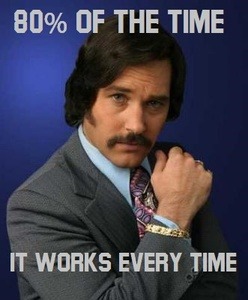
Hitting off of the percentage pitch reminds me of the concept of defensive shifts used for pull hitters.
Every now and then it will be wrong. A pull hitter smacks one the other way or gets a hit on a ball that normally would have been directly at an infielder.
It doesn’t always work, but you have to be ok with that.
By using this plan, you will absolutely get some pitches wrong and at times you look bad because of it. But over the long haul of the season it’ll likely pay large dividends for you.
Try this! Let me know how it goes for you (seriously, let me know!)
2. Lau vs Williams
Mike spent the majority of this book dissecting and comparing two of the most commonly used swing mechanics: The Charlie Lau weight shift and the Ted Williams rotational swing.
What was unique about this book is that it listed the advantages and also DISADVANTAGES to each system.
Again, it bugs me when people talk about their hitting system/technique/anything like they’ve figured it all out and this is the only way it can be or should be done.
Quick rundown on Lau and Williams’ theories (for deeper dive check out the summaries here [coming soon!]. Or even deeper you can, ya know, buy the books http://amzn.to/28QceIp and http://amzn.to/28O2crK .)
Because their bats weighed like 20 pounds, the early hitters (think Ty Cobb/ Honus Wagner) used a weight shift system where their weight ended up heavily on their front leg as they drug the bat through the strike zone.
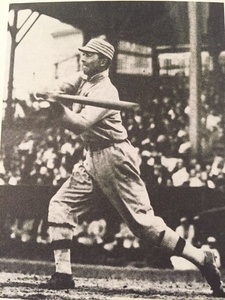
Charlie Lau modernized this a bit but it is still largely a forward moving, somewhat slap style approach.
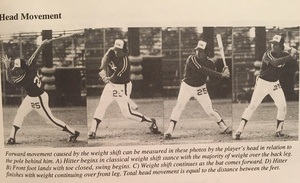
Ted Williams used a rotational swing where the weight doesn’t transfer but there is violent opening of the hips and shoulders to create the maximum torque.
Or as Schmidt puts it: Lau is throwing the javelin, Williams is throwing the shot put. (He said it better).
*Advantages of Lau System
– High batting average, fewer strikeouts, more contact.
– All field contact, although pulling the inside pitch requires exceptional adjusting movement and coordination.
– Good jump out of the batters box due to forward momentum.
– Increased bat speed for the hitter without much strength in his hands and arms.
– This hitter is most effective on the pitch from the middle of the plate out.
*Disadvantages of Lau System
– Decreased bat speedPower is sacrificed for contact.
– Weakness on the high strike, inside pitches and hard throwers.
– Exaggerated forward head movement.
– Better for lefties than righties.
Schmidt also said that this system is best for hitters with average strength.
This is a tough pill to swallow, but by his standards 90% of hitters qualify as “average strength” at the big league level.
Guys with above average strength are Trout, Cabrera, Harper, Stanton, etc. As much as we’d all like to be the power guys, contact hitting with the Lau system will likely produce better results.
*Advantages of the Ted Williams Rotation System
-Increased bat speed and power.
– The head does not move forward dramatically.
– This hitter is most effective on pitches from the middle inward.
– Better for righties than lefties.
*Disadvantages of the Ted Williams Rotation System
– Less contact. Strikeouts are increased.
– Lower batting average.
– Trouble with the pitch on the outer half.
Mike then discusses a third way of hitting – how he hit during the peak of his career – which is a compromise between Lau and Williams.
It should come as no surprise that every hitter combines elements from both systems. Over my career I found myself going between both styles based on the location of the pitch. I didn’t decide to do the combining, it just happened. It happend because, in their pure forms, I found that neither Weight Shift nor the Rotation System could be universally applied.
Basically, on an outside pitch Schmidt would use the weight shift philosophy.
If the ball was inside he would instantly switch from weight shift to rotational by pushing hard off of his front leg to hit off of a more straight front leg as opposed to drifting through the swing with weight shift.
Straightening the leg creates more room for the hands to react inside of the closer pitch.
*Advantages of the Combined System
– High batting average.
– This stroke is most effective for the middle two thirds of the plate – where the majority of pitches will be thrown.
– Bat speed is still strong.
– Head movement minimized.
*Disadvantages of the Combined System
– Maximum power and bat speed are compromised slightly in favor of average and power combination.
– The hitter is vulnerable to the inside and outside corners of the plate.
The Ground Ball Advantage
For Mike Schmidt being a power hitter, I was surprised to see how often he talked about the importance of hitting ground balls.
Why ground balls? Because productive hitting depends on how effective your “mis-hits” are. Take it from me, much less than 50% of your swings will connect on less than square contact. Say you’re a good hitter and 25% of your swings are line drives. That leaves 75% as missed swings, fould balls, fly balls and grounders.
To our average and team production, a hundred ground balls would be much more effective than a hundred fly balls because 90% of the fly balls come to nothing. But only about 60% of ground balls are useless. A good percentage of them find holes and get you on base. Others cause errors and move up runners. Your bat coming down through the strike zone from high to level is what produces the ground balls and line drives. We don’t have to worry about the balls we hit on the nose. Productive hitting comes from what we get on our miss-hit balls.
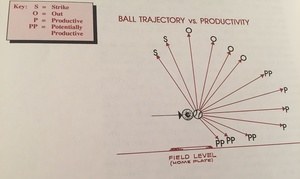
He also increased his ground ball focus during slumps.
Work at keeping your hits on the ground and out of the air. Take it from a guy who was in some deep slumps. When you’re in a slump, everything in the air is dead meat. It seemed like, until I got my confidence back, the only hits I ever got in a slump period were ground balls. Even my line drives seemed to get caught. Any time you’re swinging and keeping the ball on the ground you’ve got a good chance at hits.
GOLDEN NUGGETS
I love it when a former player drops just a little nugget on you. This book had several:
Richie Zisk: 0-2, 1-2, I came off the bottom of the bat a little bit. I pictured myself as a hockey goalie. Instead of keeping it out of the goal, I kept it out of the catcher’s mitt. I would expect every pitch to be a strike until I couldn’t swing at it.
Ben Hines: As much as I can, I have my hitters look right down the middle. From there he can make his eight to ten inch adjustment (the distance from middle to outer edges of hitting zone) . It is virtually impossible to make a seventeen inch swing adjustment from black to black. [If you were looking inside and then go outside or vice versa]
Clarence Jones: Slow the feet down. Slow feet = fast hands.
Schmidt: If you can wait, recognize and lay off bad pitches or pitchers pitches, you can work more counts in your favor. I always felt that the most important step in learning to wait is developing a “straight away” stroke. Don’t look to pull the ball, pull only by accident.
Schmidt On Roberto Clemente: His whole hitting system seemed to take aim on the right-center field gap. He’d pull the breaking ball and bash the fastball the other way.
Harry Walker: When hitting straight away, the surface of the bat is so much bigger. When you’re pulling, the bat is at such an angle that you have to be so accurate, so precise. Your timing is crucial. When hitting straight away you can be a little quick or a little late and still hit the ball sharply. To pull it, your timing needs to be perfect.
I had never thought of this before. I saw a cool feature on Steph Curry that showed that because his shots have such a high arc that the rim is literally bigger for him than for players with flatter trajectories. The same seems to apply in hitting. Good stuff. [Image page 77]
Charlie Lau: You’ve got to plan to swing at every pitch.
Al Kaline: My secret was to always keep that front shoulder closed until the last instant. That way my hands had to start. this way I could still handle the outside pitch but keep everything together to rotate my hips and get my hands through on the inside pitch.
Lots of great stuff in this book, a very comprehensive look at hitting both from a mechanical standpoint and from a hitting philosophy standpoint.
This book is no longer in print so it’s hard to find online, but I’ll sell you mine for $10 grand 🙂
Or you can try your luck with the used section of Amazon [LINK]
I want your opinion on the Percentage Pitch…have you had any luck/failure with something like this?
Leave a comment below.
Clint
About the Author Clint McGill
Employee account created by MemberMouse
